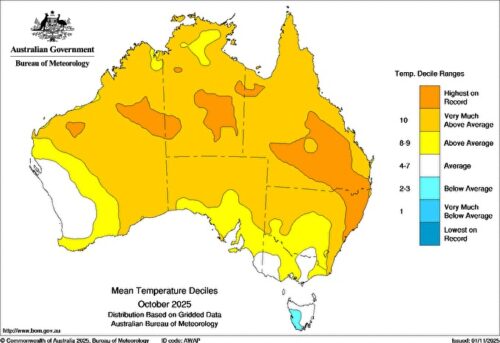With the summer months quickly approaching we analyse how humidity will affect how hot it could feel this summer.
While temperature is important in how hot it will feel, it is not the only factor. Humans and other warm-blooded animals typically cool off with sweat. This works by allowing the moisture to evaporate of the skin, cooling it down. The easier it is for this sweat to evaporate, the cooler it feels.
Cooling becomes more effective when the air is drier (i.e. a lower humidity) and if the winds are faster (i.e. wind chill).
That’s why we often refer to ‘feels like’ temperatures. This value takes into account the air temperature, relative humidity and wind speed to provide a single value of how hot it feels.
This summer, with La Niña present and strong at the very beginning, warmer than normal waters have been accumulating over northern Australia. Warmer waters help increase the humidity of the air, making it feel hotter than it normally would.
Over much of Australia, but particularly the north and east coast, higher-than-normal humidity is expected to continue right through summer. Overall, the increased humidity will increase the ‘feels like’ temperature by about 1-2 degrees this summer.
Furthermore, over the past two La Niña years we have seen some heat bursts that were competitively minor in temperature, but with a very significant humidity. A heatwave earlier this year in February made Brisbane’s temperature of 34°C feel like 40°C, thanks to a relative humidity of 54%. These types of events are more likely to occur this summer once again.
Weatherzone provides ‘feels like’ temperature forecasts and observations in addition to our other industry-leading products. To find out more about our services, please email us at apac.sales@dtn.com.







